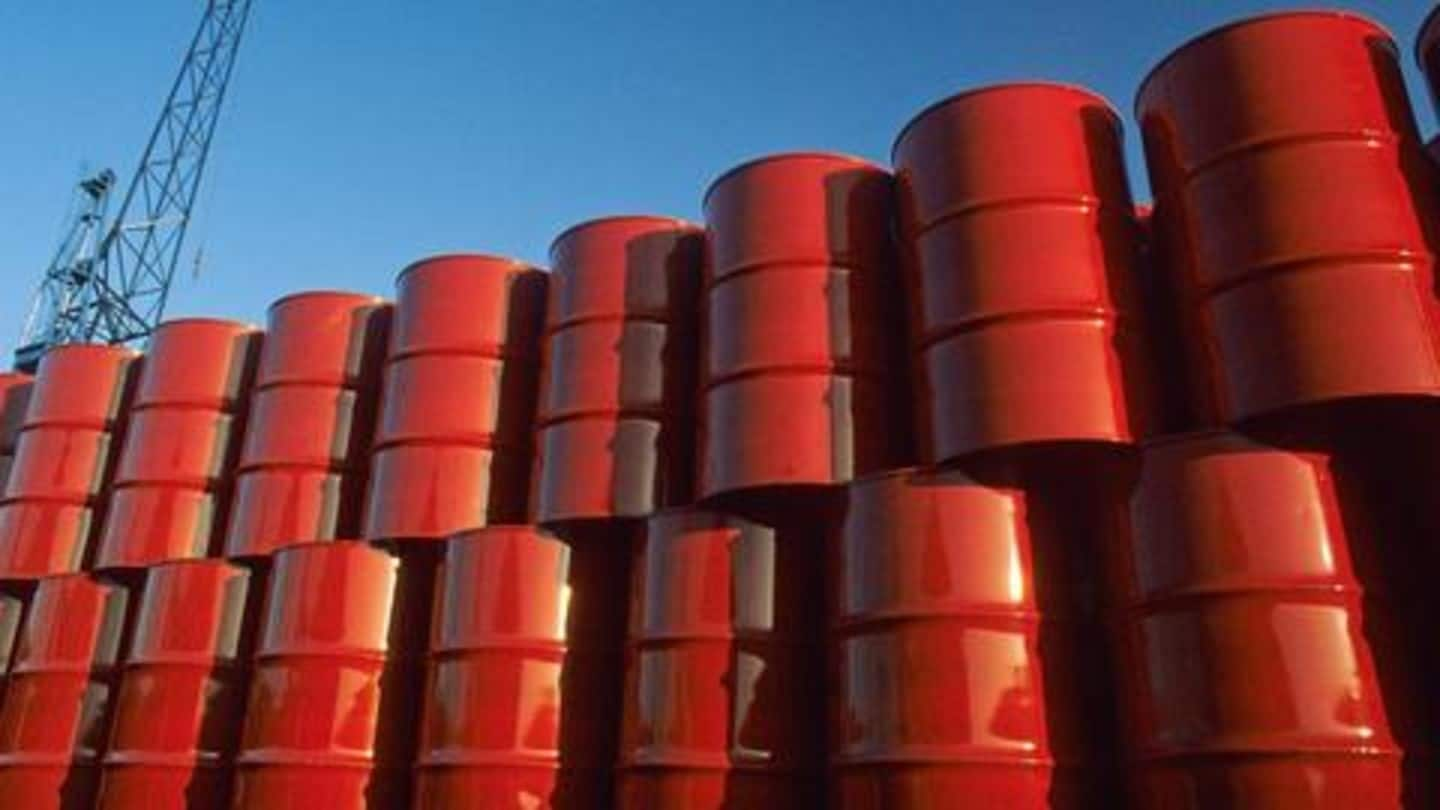
India's oil import dependency is growing, despite promises of self-sufficiency
What's the story
In October, India's crude oil import surged a whopping 10.5% to 21 million tones, marking its highest in seven years. While petroleum consumption in India registered a year-on-year growth of 4% in October, production in India's domestic oil fields fell by 7%. Meanwhile, according to data from Petroleum Planning and Analysis Cell, India's crude oil dependency now stands at 83.5%. Here's more.
Imports
India's oil import bills are set to increase by 55%
According to estimates, India's overall oil import is slated to stand at 228.6 million tons for FY18-19, up 3.6% from from FY17-18. However, in terms of value, India's oil import bills for FY18-19 are estimated to increase by a whopping 55% to Rs. 8.8 lakh crore, up from Rs. 5.7 lakh crore in FY17-18, driven by increasing crude oil prices and the weakening rupee.
Do you know?
How price and rupee fluctuations affect India's oil import bills
Given the volume of crude oil India imports, a change of $1 per barrel of crude oil affects India's crude oil import bill by Rs. 6,158cr, while a fluctuation of Re. 1 per dollar affects India's crude oil import bill by Rs. 6,639cr.
Natural gas
The situation with natural gas isn't very encouraging either
The situation with natural gas, too, is not a very encouraging one. In October this year, India's natural gas production fell to 2,798 mmscm, from 2,808 mmscm in last October. The only silver lining was that India's natural gas import fell to 45.6% in October 2018, compared to 46.9% in October last year - a decrease of 1.3%.
Promise
What PM Modi had promised in 2015
The aforementioned data is in stark contrast to Prime Minister Narendra Modi's 2015 promise to bring down import dependency. In March 2015, the Prime Minister had set a target to reduce India's dependency on oil and gas imports from around 77% then, to 67% by 2022, and ultimately to 50% by 2030, through a commensurate increase in India's domestic production.